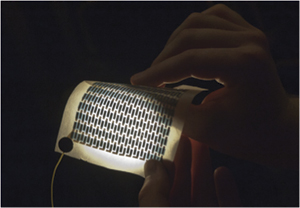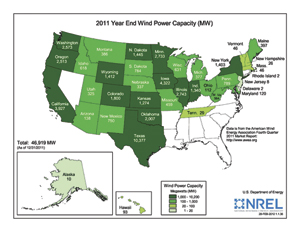BY AIMEE WELCH
Over the last few decades, solar panels have been installed on the International Space Station, recycled cooking oils have been successfully used to fuel planes, and buildings around the world have begun sprouting rooftop gardens to reduce energy costs. These high-tech accomplishments are the results of pioneering technological advancements that are changing and improving the world as we know it. Many of these vital scientific discoveries have come out of the world’s higher education institutions, driven by educators, researchers, scientists, students…all committed to one common goal – a sustainable future.“The reason it is so important for universities to do this [research] is that this kind of basic research is too expensive for business to do. Business lets universities do it because they get a double benefit: first, government and other sources of funding pay for it, and second, young people are trained in the skills that business needs,” says Greg Dirks, a distinguished sustainability scientist with the Global Institute of Sustainability, a strategic research unit of ASU’s Office of Knowledge Enterprise Development.
Through research initiatives and unique curricula, universities have become integral in the progression of many of the world’s “green” innovations, as well as in preparing tomorrow’s leaders to grow, thrive and lead in a era when sustainable practices are a necessity rather than a choice. Today, more than ever, kids are beginning to recognize the importance of sustainability – college-bound students are choosing a college not only for its reputation for academics, but also for its commitment to green practices. As stated in the Princeton Review’s 2011 College Hopes & Worries Study, 65 percent of students indicated an interest in knowing about a college’s commitment to the environment.
With new research initiatives and blue-sky thinking, universities are introducing planet-changing technological advancements – from “vibro-wind” researchers at Cornell University who are turning wind vibrations into electricity, to the University of Arizona’s evaluation of pruning methods to maximize grape production for wine makers and farmers in southern Arizona. When it comes to teaching “green,” the educational community is offering every shade of green. A few “shades” at the top of researchers’ priority lists are solar, wind, and biofuel.
Solar
In 2011, the annual growth rate of solar PV installations in the United States more than doubled, according to the U.S. Solar Market Insight Report
, and today the solar industry supports jobs and renewable energy sources in every single state. Yet today, solar power accounts for only 0.1% of energy consumed in the U.S. – which leaves room for enormous potential. Despite the common ups and downs of a maturing industry, solar is one of the most important renewable energy sources for future generations. Considering the fact that enough solar energy hits the Earth each hour to power the world for an entire year, learning how to harness this energy is one of the hottest research initiatives in the world, literally.
According to Dirks, who is also director of LightWorks, an Arizona State University (ASU) initiative that capitalizes on the university’s strengths in solar energy and other light-inspired research, increasing solar efficiency is the next big thing. “It is the next generation of solar materials that are going to be ultra-high efficiency, meaning 35 percent and above, as well as much better integrated power systems and solar modules,” he explains. “Also on the solar front is research looking into how to better control the access of these renewal energies into the grid to ensure grid stability. This research focuses on modeling and technical management of the grid.”
With more than 300 sunny days a year, Arizona universities are rightly establishing themselves as leaders in the development and advancement of solar industry initiatives.
Arizona State University
 Recently recognized by the American College and University Presidents’ Climate Commitment (ACUPCC) in its Celebrating Sustainability Series as one of 15 higher education institutions demonstrating cutting-edge work in promoting environmentally friendly and sustainable practices, ASU’s commitment to solar power is most impressive. With 57 solar photovoltaic projects accounting for approximately 30 percent of the university’s peak daytime power needs, and with the combined capacity to generate more than 15 megawatts across all four campuses and the ASU Research Park, ASU is home to the largest single university installation in the country.
Recently recognized by the American College and University Presidents’ Climate Commitment (ACUPCC) in its Celebrating Sustainability Series as one of 15 higher education institutions demonstrating cutting-edge work in promoting environmentally friendly and sustainable practices, ASU’s commitment to solar power is most impressive. With 57 solar photovoltaic projects accounting for approximately 30 percent of the university’s peak daytime power needs, and with the combined capacity to generate more than 15 megawatts across all four campuses and the ASU Research Park, ASU is home to the largest single university installation in the country.
ASU Polytechnic students are contributing to the university’s growing reputation as a solar industry leader, working closely on a “microgrid” project with SRP to determine systems that will make the power grid more dependable, as solar alternative energy products become more widespread. The microgrid will simulate the engineering challenges encountered as more multiple energy sources (solar panels, wind generators, etc.) begin contributing to the real power grid, helping SRP determine the most effective way to distribute loads.
Massachusetts Institute of Technology (MIT)
Researchers at MIT are developing materials that will make printing photovoltaic cells onto paper or fabric as simple as printing a document. The basic process is essentially the same as the one used to make the silvery lining in your bag of potato chips: a vapor-deposition process that can be carried out inexpensively on a vast commercial scale.
The research, supported by the Eni-MIT Alliance Solar Frontiers Center program and the National Science Foundation, supports a process very different than the more commonly used process for creating solar cells, which typically involves liquids and high temperatures. By using vapors and lower temperatures instead of more damaging techniques, researchers were able to print solar cells onto regular paper, plastic, cloth, or PET plastic, which proved functional and stable even after being folded up like a paper airplane thousands of times. While most solar research is currently focusing on commercial-scale solar applications that could feed into the electric grid, “printable” solar cells extend to disposable consumer goods, window shades, wallpaper, and other applications, according to Peter Harrop, chairman of IDTechEx, a company that researches printed electronics. Harrop told MITnews the potential for this type of research is “at least as large” as the larger-scale solar projects. “I am very excited by what is being done by the MIT team,” he says.
While most solar research is currently focusing on commercial-scale solar applications that could feed into the electric grid, “printable” solar cells extend to disposable consumer goods, window shades, wallpaper, and other applications, according to Peter Harrop, chairman of IDTechEx, a company that researches printed electronics. Harrop told MITnews the potential for this type of research is “at least as large” as the larger-scale solar projects. “I am very excited by what is being done by the MIT team,” he says.
University of Arizona
The U.S. Department of Energy’s (DOE) SunShot Initiative is a national collaborative effort to make solar power cost-competitive with traditional energy sources by the end of the decade. Price has been one of the biggest drawbacks in the evolution of solar energy, but financial analysts and industry experts anticipate solar power prices will begin falling below retail electricity rates between 2013 and 2018.
“As we continue to push for innovation to drive down the cost of solar, it’s much easier to imagine a day in the near future when we will reach $1 per watt for a fully installed solar energy system. If I’ve learned anything during my term as SunShot Director, it is that the seemingly impossible will one day be possible,” said Ramamoorthy Ramesh, Director of the SunShot Initiative and Solar Energy Technologies Program, in The Huffington Post.
As part of the DOE’s SunShot Initiative, and in pursuit of its plan to regain leadership for the U.S. in the global clean energy race, the DOE recently invested $56 million in 21 research projects “designed to further advance cutting-edge, concentrating solar power (CSP) technologies,” which use mirrors to reflect and concentrate sunlight to produce heat, which is then used to produce electricity. Unlike other solar technologies, CSP systems have the ability to store energy as heat so that energy needs can be met whether or not the sun is shining. In partnership with private industry and national laboratories, several American universities – including Boston University, MIT, San Diego State University, and the University of Arizona (U of A) – will utilize funding to implement key research initiatives.
At U of A, researchers are using mirror-making technology to make ground-breaking, highly concentrating solar mirrors that will help produce solar electricity at non-renewable energy prices.
![]() “The tracker” is the name given to the research team’s house-sized structure made of crisscrossing steel tubes attached to a swiveling post secured with concrete at the bottom of an empty swimming pool behind the university’s Bear Down Gymnasium.
“The tracker” is the name given to the research team’s house-sized structure made of crisscrossing steel tubes attached to a swiveling post secured with concrete at the bottom of an empty swimming pool behind the university’s Bear Down Gymnasium.
With additional funding from the DOE, U of A’s researchers are improving the “tracker” technology, which produces a smaller carbon footprint than photovoltaic (PV) panel-based plants. The project’s potential is great. Roger Angel, Regents’ Professor of Astronomy and Optical Sciences and director of Steward Observatory Mirror Lab, predicts that an array of sun trackers situated on a 7-mile-by-7-mile area would generate 10 gigawatts of power during sunshine hours. “You could make the same total amount of electrical energy as the Palo Verde Nuclear Power Plant near Phoenix, the biggest nuclear power plant in the country,” he reports in UANews.
“We have laid the foundation for a structure that meets all the criteria you would want to see in an energy technology that is kind on the planet [and] doesn’t emit carbon,” Angel said.
Biofuel
The production of bioenergy and biofuels – transportation fuels such as ethanol and biodiesel, which are made from renewable, organic resources like wood and livestock waste, animal fat, soybeans, corn, and other domestic crops – is critical to the United States because, with no toxic chemicals and very little sulfur, the process is better for the environment. Biofuels could also potentially reduce our country’s dependence on foreign oil.
The Department of Energy (DOE) reports that many alternative fuels are in the works, but more research is needed to determine the impact, which could range from vehicle modifications to human health to emissions.
Dirks, who is also a former president of BP Asia-Pacific and BP China, and instrumental in the Arizona Center for Algae Technology and Innovation, says ASU is actively researching this important field of study. “On the biofuels front, the most important developments are in cellulosic materials to fuels and specifically taking waste cellulose materials, as in corn syrup and wood chips, and breaking the cellulose down into fermentable sugars and then using a variety of different microbiological techniques to convert that into liquid fuels. Also, algae and especially cyanobacteria that excrete their product so you don’t have to harvest the biomass,” he explains.
These and other methods of converting organic materials into fuel are keeping university researchers around the nation busy.
The Ohio State University
At The Ohio State University, genetically modified bacteria is being used to efficiently convert carbon dioxide directly into butanol, which could be used as a fuel blend or converted into a liquid form resembling gasoline. Researchers developed large tanks (bioreactors) to grow new strains of bacteria, specifically engineered to produce up to 50% more butanol than natural bacteria. If successful, this new liquid could fairly compete with gasoline on price, and hold a huge advantage over other biofuels in terms of production efficiency. Successfully producing cost-competitive Electrofuels would deliver significant economic and environmental benefits for the U.S., as well as increasing the nation’s energy security by reducing dependence on foreign oil.
Wind
 With approximately 1.2 percent of the U.S.’s energy consumption coming from wind energy, and projections from the DOE predicting that wind energy will supply 20 percent of the nation’s electricity by 2030, research and development efforts for the advancement of this critical renewable resource are expanding rapidly. Achieving these numbers would require 300,000 megawatts of new wind-generating capacity, making technological progress imperative. The DOE Wind Program is developing the rapid expansion of clean, affordable, reliable domestic wind power to promote new job creation, increase rural economic development, and help meet the nation’s energy needs. The program manages the public’s investment in wind technologies to improve the performance and lower the cost of wind power.
With approximately 1.2 percent of the U.S.’s energy consumption coming from wind energy, and projections from the DOE predicting that wind energy will supply 20 percent of the nation’s electricity by 2030, research and development efforts for the advancement of this critical renewable resource are expanding rapidly. Achieving these numbers would require 300,000 megawatts of new wind-generating capacity, making technological progress imperative. The DOE Wind Program is developing the rapid expansion of clean, affordable, reliable domestic wind power to promote new job creation, increase rural economic development, and help meet the nation’s energy needs. The program manages the public’s investment in wind technologies to improve the performance and lower the cost of wind power.
In 2011, the DOE allocated $43 million in offshore wind funding, spanning 41 projects around the country. The DOE website says, “The projects represent investments in more than 160 universities, labs and businesses in 20 states, which will bring offshore wind to market in the Northeast, mid-Atlantic and Southeast. The awards also provide manufacturers, developers, academics and researchers opportunities to explore market growth in offshore wind, technology innovation and modeling for the design of next-generation turbines.”
University of Colorado Boulder
Wind energy is a valuable renewable energy resource, and assistant professor Julie Lundquist of the University of Colorado Boulder and her team of graduate students have launched a study (Turbine Wake and Inflow Characterization Study, or TWICS) to determine the possible effects of the wakes of invisible ripples created by the turbines on the atmosphere, and their influence on wind turbines downstream. Working with researchers from the National Oceanic and Atmospheric Administration, the U.S. Department of Energy’s National Renewable Energy Laboratory (NREL), and the Lawrence Livermore National Laboratory, Lundquist says their findings will help scientists and wind energy developers to better understand power production and increase the productivity of wind farms. “Today’s massive wind turbines stretch into a complicated part of the atmosphere. If we can understand how gusts and rapid changes in wind direction affect turbine operations and how turbine wakes behave, we can improve design standards, increase efficiency and reduce the cost of energy.”
Today’s Advancements, Tomorrow’s Leaders
The “next big thing” could come from anyone, anywhere, but universities are the perfect place to explore the technology of the future, according to Dr. Cornelius B. Murphy, Jr., president of the SUNY College of Environmental Science and Forestry. “The first thing is we have a responsibility to educate the next generation of people who will be using this technology, such as the bioprocess engineers and the chemical engineers. Our research is integrated into our teaching, so we are using it to help prepare the practitioners who are going to be working with solar technology and these other new developments…having the technology on our own campus allows our students to ask the basic question: ‘How does it work?’ It aligns with our plan to have the buildings teach and be part of the instruction.”







